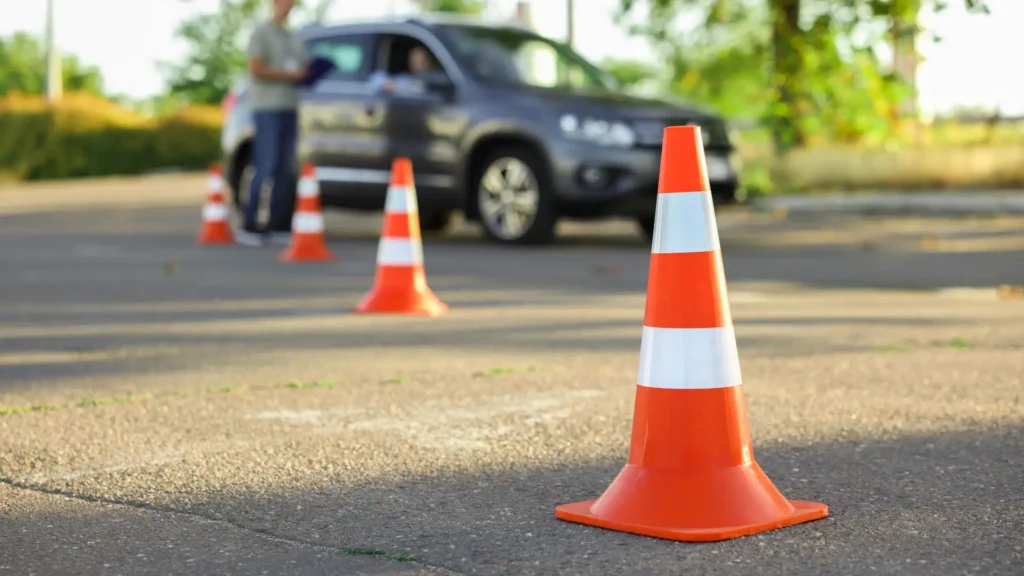Merthyr Tydfil Driving Test Centre Routes, Booking, and Preparation Guide
📍 Location and address of Merthyr Tydfil Town Driving Test Centre
Address
Unit 12
Pant Industrial Estate
Merthyr Tydfil
CF48 2SR
- Classification: ★★★★☆ 4.4
- Passing rate: 53.5%
- Waiting time on average (2024–2025): 12.2 weeks
🏢 Merthyr Tydfil Driving Test Centre facilities
🚻 Male and female toilets are available.
♿ Full disabled access is provided.
🅿️ Free car parking for exam candidates
✅ What tests are carried out at Merthyr Tydfil Town Driving Test Centre?
This Town Driving Test Centre offers car (B) license driving tests here. Both manual and automatic options are available.
🛣️ Town driving test routes in Merthyr Tydfil
Official here Town driving test routes, there are more than 12 that cover urban, rural, and dual carriageway driving. Each route tests the student's observation skills, speed control, and hazard awareness.
🏨 Budget friendly hotel near Merthyr Tydfil town driving test centre
Consider the following hotels if you're going out of town or want to spend the night:
- Travelodge Merthyr Tydfil
- Premier Inn Merthyr Tydfil
- Local B&B in the Brecon Beacons area
These options help you reduce stress on test day.
🚗 Improve your driving skills before the test
You can join online driving courses to enhance your preparation. These are especially helpful:
- For international license holders
- For nervous or returning drivers
- For first-time learners who want to pass with confidence.
🗺️ Notable Merthyr Tydfil Town Driving Test Routes and Areas
The test starts from Pant Industrial Estate and covers these routes:
- Merthyr town centre one-way system
- A465 and A470 dual carriageways
- Gold rush in residential areas of Georgetown
Major roads include:
- A470 – with speed changes and roundabouts
- A465 - Dual Carriageway Practice
- B4285 - A common choice for independent driving
👉 I Town driving test routes. Practicing this beforehand improves your chances.
📅 What to expect on Merthyr Tydfil Test Day
The structure of the test is something like this:
- 👁️ Eyesight Test - Reading a number plate from 20.5 meters
- ❓ "Tell me" security question
- 🕓 40 minutes drive - 20 minutes free driving
- 🔁 One Maneuver - Bay Park, Parallel Park or Pull Up to the Right
- ⚠️ Emergency Stop - 1 out of 3 tests included.
🏘️ Great areas to live in Merthyr Tydfil
If you are planning to settle here, these neighborhoods are the best:
- Heolgerrig - Peaceful sleeping family friendly
- Penyard - Modern Homes and Parks
- Dowlais - with schools and local shops
- Twynyrodyn - close and convenient to the town centre
- Cefn Coed - The countryside feels perfect.
❌ If you don't pass the test
Improvement steps after failure:
- Repeat lessons with a local instructor.
- Join an online course to cover weak points.
- the same Town driving test routes Practice again
📍 Best places to visit in Merthyr Tydfil after the test
Best places to relax and party:
- Brecon Beacons National Park - scenic views and hiking trails
- Cyfarthfa Castle - Historic Gold Cultural Site
- Merthyr Tydfil Leisure Village - Cafe, cinema, and activities
- Pontsticill Reservoir - Peaceful nature spot
✅ Key Facts - Merthyr Tydfil Town Driving Test Centre
- Position: Pant Industrial Estate, CF48 2SR
- Waiting Time (2024–2025): 12.2 weeks
- Amenities: Toilets, disabled access, free parking
- Tests performed: Car (B – Manual and Automatic)
- Recommended practice areas: Town centre, A470, A465, B4285
- Local hotels: Travelodge Merthyr، Premier Inn، B&Bs
- Preparation Tip: Study the town driving test routes first.


